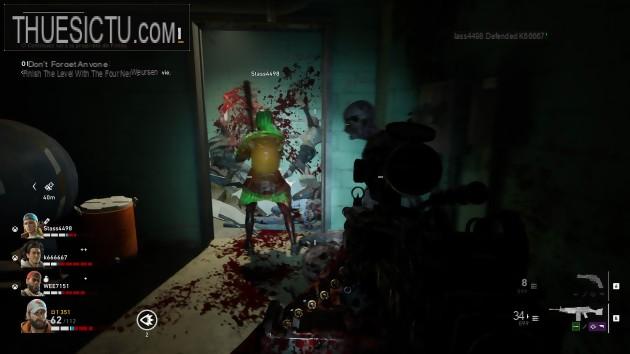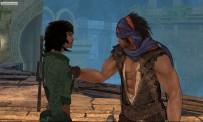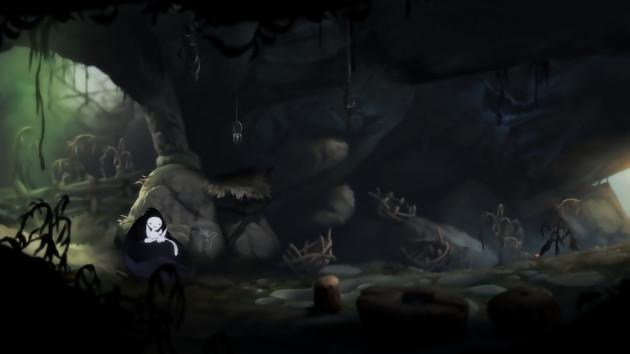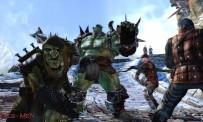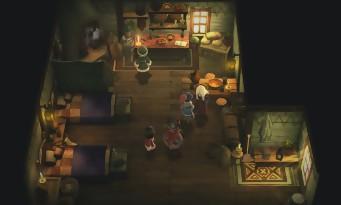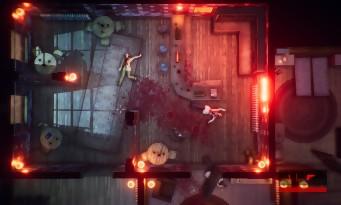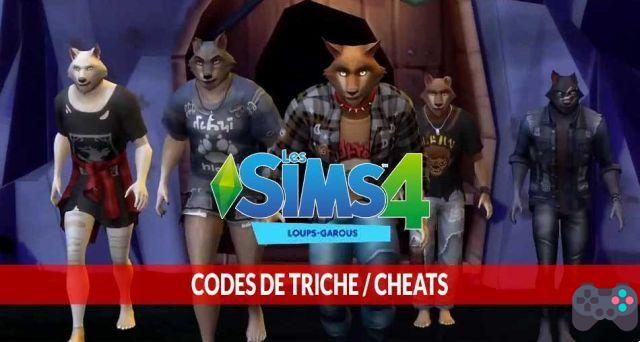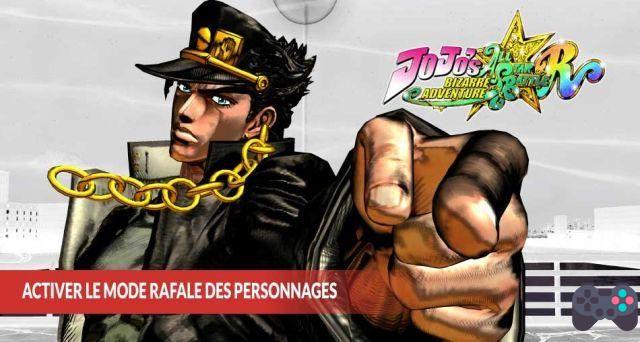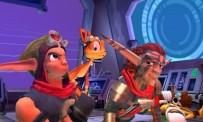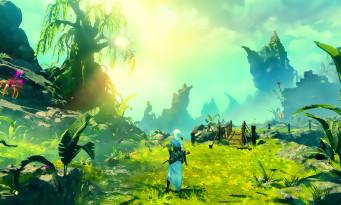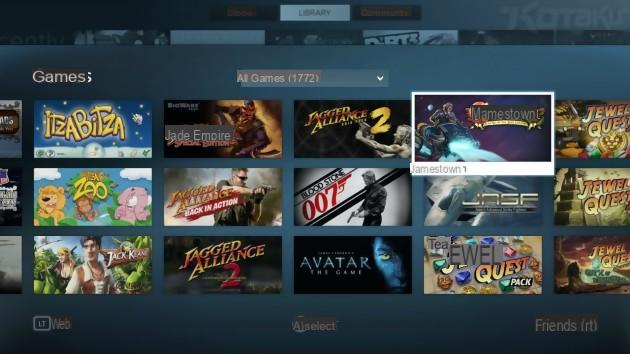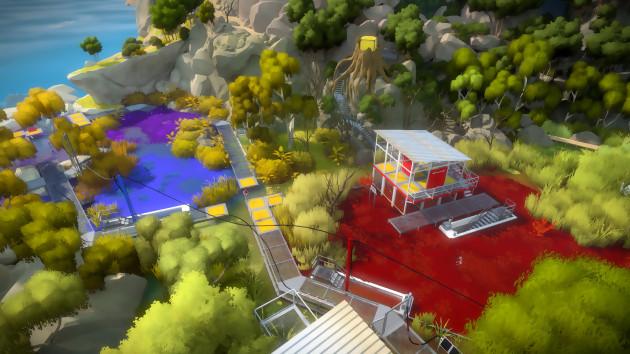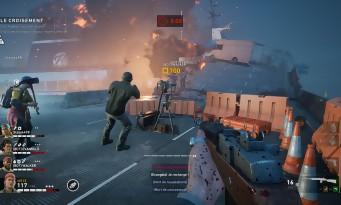 A team of four survivors who have to fight their way from refuge to refuge among hordes of zombies, does this ring a bell? No ambiguity is present, Back 4 Blood is indeed a Left 4 Dead 3 which does not say its name. And so much the better! After all, it's the same developers, and with twelve years since Left 4 Dead 2, we really can't talk about overexploitation. On the other hand, it would have been good for the studio to take advantage of this period of time to beef up the scriptwriting aspect of the experience. The narration takes a back seat too much, and attempts to build the universe through dialogues that no one can really hear during the frenetic action inevitably fall into the water. In short, let's get back to basics and therefore to the Left 4 Dead aspect. In Back 4 Blood also the artificial intelligence balances special monsters according to the actions of the players, in levels large enough not to betray their "corridor" nature too much and sufficiently collected so that we always know where to go. The objectives are always simple (items to find, mechanisms to trigger, crates to open...), you have to be careful not to set off alarms and not to disturb the crows (or risk alerting the horde), and each refuge gives us the opportunity to replenish health, weapons or accessories. With thirty-three missions divided into four acts, the content is relatively substantial, especially since the replayability is present. There are also eight different characters to embody, each of them with a secondary weapon and unique advantages. As for the special monsters, whether Giants, Plagued or Stingers, they roughly resume the archetypes of Left 4 Dead and therefore inevitably remind us of the Boomers, Hunters and other Tanks of yesteryear.
A team of four survivors who have to fight their way from refuge to refuge among hordes of zombies, does this ring a bell? No ambiguity is present, Back 4 Blood is indeed a Left 4 Dead 3 which does not say its name. And so much the better! After all, it's the same developers, and with twelve years since Left 4 Dead 2, we really can't talk about overexploitation. On the other hand, it would have been good for the studio to take advantage of this period of time to beef up the scriptwriting aspect of the experience. The narration takes a back seat too much, and attempts to build the universe through dialogues that no one can really hear during the frenetic action inevitably fall into the water. In short, let's get back to basics and therefore to the Left 4 Dead aspect. In Back 4 Blood also the artificial intelligence balances special monsters according to the actions of the players, in levels large enough not to betray their "corridor" nature too much and sufficiently collected so that we always know where to go. The objectives are always simple (items to find, mechanisms to trigger, crates to open...), you have to be careful not to set off alarms and not to disturb the crows (or risk alerting the horde), and each refuge gives us the opportunity to replenish health, weapons or accessories. With thirty-three missions divided into four acts, the content is relatively substantial, especially since the replayability is present. There are also eight different characters to embody, each of them with a secondary weapon and unique advantages. As for the special monsters, whether Giants, Plagued or Stingers, they roughly resume the archetypes of Left 4 Dead and therefore inevitably remind us of the Boomers, Hunters and other Tanks of yesteryear.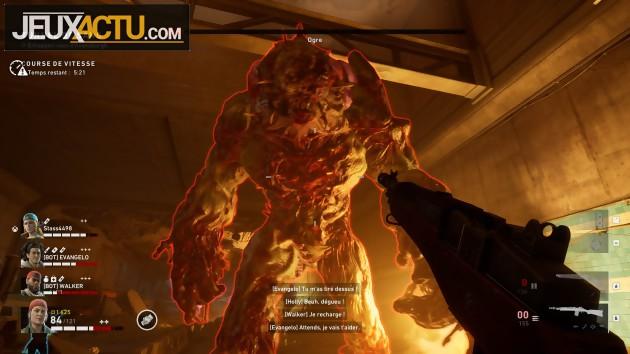
A LA CARTE ZOMBIES
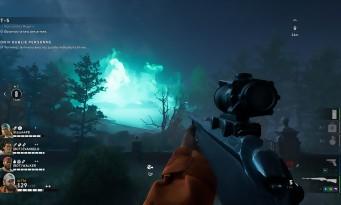 However, it would be inappropriate to speak of redundancy or lack of risk-taking, because Back 4 Blood is totally innovative in another part of the gameplay. Indeed, the missions are coupled with a buildable card deck system, each card being able to bring one or more bonuses to a specific character or to the whole team (improved reloading speed, punch transformed into a stab , charged attack, additional life points, kills that restore life…). There are over a hundred maps to unlock through supply points earned by completing campaign missions. And during a campaign, each completed chapter allows you to activate additional cards, drawn from the deck that you have previously built and chosen. This system contributes to increasing the lifespan, since the most relentless players will not hesitate to "farm" the missions in order to obtain all the cards. And it introduces an extra dose of strategy, especially if you're lucky enough to be playing with friends rather than strangers.
However, it would be inappropriate to speak of redundancy or lack of risk-taking, because Back 4 Blood is totally innovative in another part of the gameplay. Indeed, the missions are coupled with a buildable card deck system, each card being able to bring one or more bonuses to a specific character or to the whole team (improved reloading speed, punch transformed into a stab , charged attack, additional life points, kills that restore life…). There are over a hundred maps to unlock through supply points earned by completing campaign missions. And during a campaign, each completed chapter allows you to activate additional cards, drawn from the deck that you have previously built and chosen. This system contributes to increasing the lifespan, since the most relentless players will not hesitate to "farm" the missions in order to obtain all the cards. And it introduces an extra dose of strategy, especially if you're lucky enough to be playing with friends rather than strangers.
Communicating about the cards you have in order to choose additional bonuses can greatly help to overcome the difficulty of the game. Especially since you also have to take into account the corruption cards "played" randomly by the enemies. They can sometimes offer us a challenge to complete, but also inflict penalties, such as excessive special zombies, permanently decreasing health or even a large number of crows. Note that the time given to players to choose their cards at the start of each chapter is far too long. When playing with strangers, it is not uncommon to have to wait long minutes before the slowest of the band finally passes the selection screen. So much so that it is sometimes more pleasant to play with bots. Their behavior is obviously far from flawless, but at least they don't waste our time, and don't hesitate to heal us or give us ammunition as soon as the need arises. The same cannot be said for all "random" players.
TAKE IT OR LEAVE IT
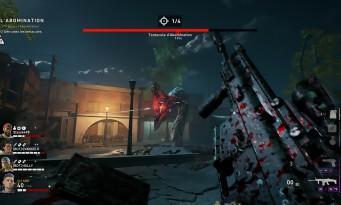 But let's not blame the game for the behavior of the players, because anyway, objective and intrinsic flaws are also part of it. The "continue" system, based on save points to be reached in just two attempts, is for example unnecessarily punitive. The French translation is not worthy of an AAA since faults or gross errors are regularly visible ("pose the enemies" because of the English expression "put them down") and some even go so far as to lodge in achievements ("kill at least one of each non-boss mutation" seems pretty clumsy, for example). If the Swarm mode which allows you to embody monsters has the merit of existing, it unfortunately has the bad idea of taking place in closed arenas. Most players will therefore neglect it. The random generation of corruption maps and enemies is sometimes the cause of rather unfair difficulty spikes. And to top it off, the game is not free from bugs, whether it's connection drops, unexpected return to the desktop, elements that move jerkily, or even enemies not very clever who don't really know how to move around in the environments (hello ogres). All these little problems betray a certain lack of finish and necessarily reduce the pleasure of the game.
But let's not blame the game for the behavior of the players, because anyway, objective and intrinsic flaws are also part of it. The "continue" system, based on save points to be reached in just two attempts, is for example unnecessarily punitive. The French translation is not worthy of an AAA since faults or gross errors are regularly visible ("pose the enemies" because of the English expression "put them down") and some even go so far as to lodge in achievements ("kill at least one of each non-boss mutation" seems pretty clumsy, for example). If the Swarm mode which allows you to embody monsters has the merit of existing, it unfortunately has the bad idea of taking place in closed arenas. Most players will therefore neglect it. The random generation of corruption maps and enemies is sometimes the cause of rather unfair difficulty spikes. And to top it off, the game is not free from bugs, whether it's connection drops, unexpected return to the desktop, elements that move jerkily, or even enemies not very clever who don't really know how to move around in the environments (hello ogres). All these little problems betray a certain lack of finish and necessarily reduce the pleasure of the game.